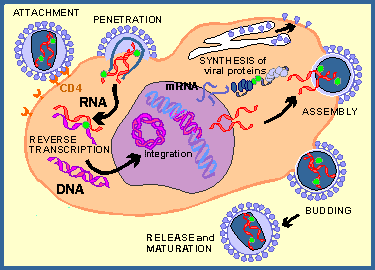 |
AIDS
|
||||
|
|
Since 1981, when HIV/AIDS was first identified in the U.S., more than 25 million people worldwide have died from AIDS-related illnesses. It estimates that today, nearly 39.5 people throughout the world are living with HIV, including more than one million Americans, says the Centers for Disease Control and Prevention. In 2005, more than 11,000 people around the world were newly diagnosed with HIV each day, and of those new cases, approximately 1,500 were children under the age of 15, according to the UNAIDS/WHO report.
HIV is found in blood, semen, vaginal
fluid and breast milk. HIV can only be transmitted if one of these
infected fluids enters the blood stream through contact with the mucous
membranes, such as the mouth or vagina, or through direct contact, such
as needle sticks or injections. According to the CDC, most people
get HIV by:
• having sexual contact with an infected person, • sharing needles and syringes with someone who is infected, • getting transfusions of infected blood or blood clotting factors (this rarely occurs in countries where blood is screened for HIV antibodies), • being born to an HIV-infected mother, • drinking the breast milk of an HIV-infected woman.
While some people who are infected with HIV experience chronic symptoms such as fever, diarrhea, weight loss, night sweats and swollen lymph nodes, others may not develop symptoms for many years, according to the National Institute of Allergy and Infectious Diseases. The only way to tell if someone has HIV is with a blood test. If a person becomes infected with HIV, his or her body will try to fight the infection by making antibodies. If a blood test shows the presence of these antibodies, then the person is diagnosed as having HIV, and is considered "HIV positive." A person can not rely on symptoms alone to determine if someone has AIDS, because the symptoms of AIDS are similar to the symptoms of other diseases. In order to be diagnosed with AIDS, a person must be HIV positive and have a T-cell count below 200 (a normal count ranges from 500 to 1,800 per cubic millimeter of blood), or have one or more opportunistic infections like the flu.
|

